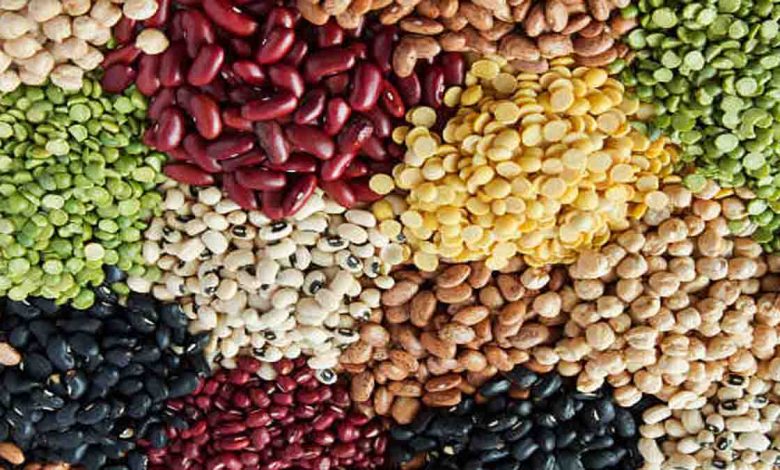Rising prices of pulses, oils add to common man’s woes

Monday, 05 April 2021 | Rajesh Kumar | New Delhi
The prices of pulses and edible oils are adding to the woes of millions of consumers already struggling with reduced earnings or job losses. The prices of mustard oil, groundnut oil and vanaspati oil are being quoted at Rs 200 per kg in some parts of the country. Similarly, pulses are being quoted between Rs 110 and Rs 143 a kg in retail market for the past few months.
Arhar is being sold at Rs 130 a kg in Raipur; moong and urad at Rs 143 a kg in Thiruvananthapuram and gram at Rs 110 a kg in Vijaypur.
According to the Ministry of Consumer Affairs’ Price Monitoring Division’s data, mustard oil, an essential cooking medium across eastern and north-eastern India, is being sold in the range of Rs 155-175 per kg. The Government-owned KVIC is selling mustard oil at Rs 200 a kg.
Similarly, prices of groundnut oil have touched Rs 2212 a kg in Thiruvananthapuram. Vanaspati oil prices have touched Rs 221 a kg in Mysore.
The data further shows soya oil is being sold at Rs 165 in Tura and palm oil at Rs 188 a kg in Ramanathapuram. India’s edible oil industry is dominated by both loose and packaged oil including soy oil, mustard, coconut and groundnut oil.
Mustard oil which was around Rs 132 a kg in Delhi in April last year, has now soared to Rs 149 a kg.
Groundnut oil which was around Rs 170 a kg has now touched Rs 188-190 a kg. Similarly palm oil which was sold at Rs 96 a kg has now touched Rs 130 a kg. Sunflower which was around Rs 132 a kg a year ago now its price has soared to Rs 181 a kg. Arhar which was Rs 95 a kg is now being sold at Rs 107 a kg.
It is a similar story for other pulses such as urad and moong in cities such as, Patna, Lucknow, Ahmedabad, Nagpur, Bengaluru, Mumbai and Kolkata.
Officials said that prices will continue to remain high due to shortage of edible oils. India continues to remain an oil deficit country and imports millions of tonnes of edible oil each year to meet the demand-supply gap, making it the world’s largest importer of edible oils.
India’s cooking oil market is estimated at $21.5 billion in 2019 and set to grow to $35.2 billion by 2025. Officials also added that labour shortage in palm oil plantations of Indonesia and Malaysia, drought in Argentina affecting soyabean production, lower production of sunflower crops in Ukrain and rigorous buying of edible oils by China, impacted price of edible oils in domestic as well as international markets in later part of pandemic year.
This time, however, the production is good. “Although new is being harvested, anti-farm law agitation across Punjab, Haryana and Rajasthan have hit the harvesting and timely dispatch to oil mills.
So, the mustard oil production was hit hard since edible oil price is largely determined by soya and palm oils, which are widely used as cooking medium across rest of India. The lower import of these two varieties of edible oil left a yawning gap between the demand and supply, spiking edible oil prices across the categories, officials said.
On the pulse prices, officials said that despite a bumper kharif harvest, the prices of pulses have continued to increase. This has forced the Government to create a buffer stock of pulses.
The Ministry’s data shows between December 28, 2020 and February 28, 2021, the mustard oil prices jumped from Rs 115 to 168 in Nashik; from Rs 115 to Rs 145 a litre in Chandigarh; from Rs 110 to Rs 150 in Rajkot; from Rs 125 to Rs 155 in Gawlior and Rs 110 to 132 in Rewa. Interestingly, the prices in Jammu reduced from Rs 208 a litre to Rs 163; from Rs 157 to Rs 143 in Delhi; from Rs 175 to 157 in Solan; from Rs 128 to Rs 118 in Haldwani; from Rs 158 to Rs 148 in Purnia; from Rs 146 to Rs 125 in Cuddalore and Rs 159 to 149 in Mumbai during the same period.
Similarly, the prices of palm oil also jumped up to Rs 25-30 in several States during the same period. In Karnal, the prices shown jump from Rs 90 to Rs 112 and from Rs 110 to Rs 134 in Meerut.






